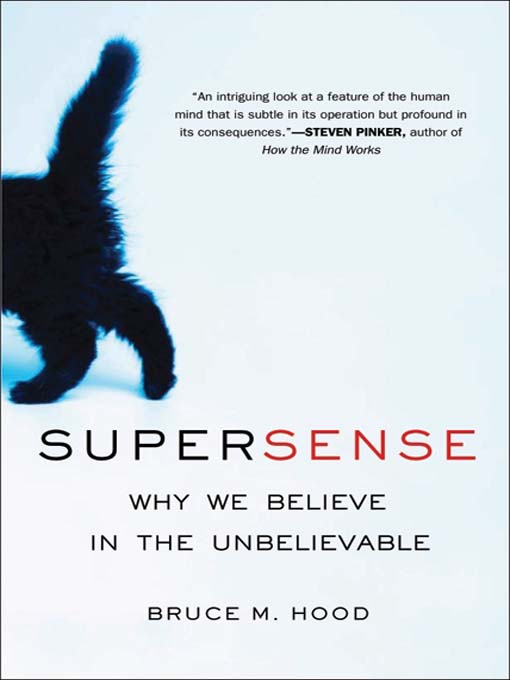
SuperSense
Why We Believe in the Unbelievable
کتاب های مرتبط
- اطلاعات
- نقد و بررسی
- دیدگاه کاربران
نقد و بررسی

December 15, 2008
Hood (director, Bristol Cognitive Development Ctr., Univ. of Bristol) presents an intriguing study of an undefined sense apart from the five human senses with which we are familiar. He most often characterizes it as "supersense," something that all cultures appear to have in order to explain the unexplainable. He methodically makes his case, often referring to things that children universally believe. The human penchant for sorting and imbuing objects with a special essence, the mind-body problem, and human disgust are just some of the topics he tackles. Hood demonstrates that in many cultures, religions are based on the idea that there is a reality outside what we can scientifically document. This "extra" reality is also relied upon by those who claim that ESP, the paranormal, and magic are real. In the end, he posits that this supersense, even though it is not scientifically measurable, is important for society to function; it is part of the glue that binds us and makes us care about one another. This recommended title should spark discussion in both academic and public libraries.Margaret Cardwell, Memphis
Copyright 2008 Library Journal, LLC Used with permission.

February 1, 2009
British experimental psychologist Hood (Cognitive Development/Univ. of Bristol) argues that superstition is the product of normal mental development.
A high proportion of adults, even those who are scientifically literate, hold beliefs that qualify as superstition, writes the author. For example, people won't wear a sweater they are told belonged to a mass murderer, and some star athletes insist on repeating actions that have accompanied previous successes, such as always eating chicken before a game. The reason lies in psychology: We insist on finding meaning in the world, treating random events as if some hidden pattern links them. Behaviorist psychology grew out of Pavlov's and Skinner's recognition that our minds make such links on their own, writes Hood, but Piaget's more subtle analysis reveals that our brains have built-in abilities to recognize real patterns, like those displayed by natural phenomena, and that we are already doing so in infancy. A child dropping things is learning about gravity, and we also learn psychology at an early age, drawing inferences on how people respond to events and to our actions. But this useful faculty is also directed at inanimate objects, as when people give their cars names or curse at a computer for failing to do what it's told. Our mind's ability to see analogies leads to what anthropologists call"sympathetic magic," the notion that similar thingsare somehowconnected toone another. (This is the idea behind homeopathic medicine, to cite one example.) Another psychological pattern leads us to associate special properties with certain items, such as a child's security blanket or the"lucky" items many adults carry with them. Collectors of memorabilia are also indulging in a kind of magical belief, as if something once owned by a famous person possesses that person's special qualities. Hood persuasively demonstrates that these beliefs originate in normal psychology, the rational patterns our minds use to make sense of our surroundings. Drawing on both laboratory results and everyday experience, he offers a clear perspective on the subject.
Convincing treatment of a sensitive, frequently contentious issue.
(COPYRIGHT (2009) KIRKUS REVIEWS/NIELSEN BUSINESS MEDIA, INC. ALL RIGHTS RESERVED.)

























دیدگاه کاربران